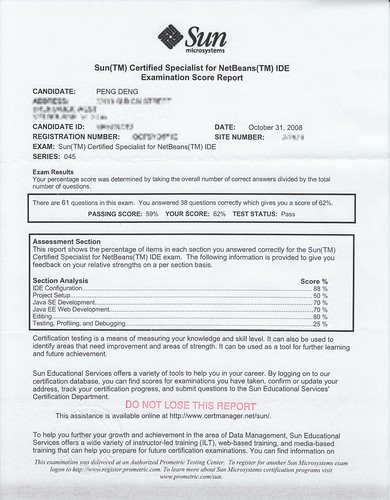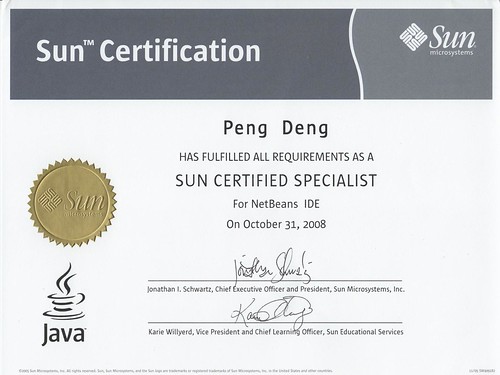The Internet has had an enormous impact on people's lives around the world in the ten years since Google's founding. It has changed politics, entertainment, culture, business, health care, the environment and just about every other topic you can think of. Which got us to thinking, what's going to happen in the next ten years? How will this phenomenal technology evolve, how will we adapt, and (more importantly) how will it adapt to us? We asked ten of our top experts this very question, and during September (our 10th anniversary month) we are presenting their responses. As computer scientist Alan Kay has famously observed, the best way to predict the future is to invent it, so we will be doing our best to make good on our experts' words every day. - Karen Wickre and Alan Eagle, series editors
There are currently about 3.2 billion mobile subscribers in the world, and that number is expected to grow by at least a billion in the next few years. Today, mobile phones are more prevalent than cars (about 800 million registered vehicles in the world) and credit cards (only 1.4 billion of those). While it took 100 years for landline phones to spread to more than 80% of the countries in the world, their wireless descendants did it in 16. And fewer teens are wearing watches now because they use their phones to tell time instead (somewhere Chester Gould is wondering how he got it backwards). So it's safe to say that the mobile phone may be the most prolific consumer product ever invented.
However, have you ever considered just exactly how powerful these ubiquitous devices are? The phone that you have in your pocket, pack, or handbag is probably ten times more powerful than the PC you had on your desk only 8 or 9 years ago (assuming you even had a PC; most mobile users never have). It has a range of sensors that would do a martian lander proud: a clock, power sensor (how low is that battery?), thermometer (because batteries charge poorly at low temperatures), and light meter (to determine screen backlighting) on the more basic phones; a location sensor, accelerometer (detects vector and velocity of motion), and maybe even a compass on more advanced ones. And most importantly, it is by its very nature always connected.
Project out these trends another ten years. You will be carrying with you, 24x7 (a recent study of Chinese mobile customers showed that the majority of them sleep within a meter of their phones), a very powerful, always connected, sensor-rich device. And the cool thing is, so will everyone else. So what are you going to do with it that you aren't doing now? Here are some possibilities:
Smart alerts: Your phone will be smart about your situation and alert you when something needs your attention. This is already happening today -- eBay can text you when you've been outbid, and alert services (such as Google News) can deliver news, sports, or stock updates to you. In the future these applications will get smarter, patiently monitoring your personalized preferences (which will be stored in the network cloud) and delivering only the information you desire. One very useful scenario: your phone knows that you are heading downtown for dinner, and alerts you of transit conditions or the best places to park.
Augmented reality: Your phone uses its arsenal of sensors to understand your situation and provide you information that might be useful. For example, do you really want to know how much is that doggy in the window? Your phone, with its GPS and compass, knows what you are looking at, so it can tell you before you even ask. Plus, what breed it is and the best way to train him.
Crowd sourcing goes mainstream: Your phone is your omnipresent microphone to the world, a way to publish pictures, emails, texts, Twitters, and blog entries. When everyone else is doing the same, you have a world where people from every corner of the planet are covering their experiences in real-time. That massive amount of content gets archived, sorted, and re-deployed to other people in new and interesting ways. Ask the web for the most interesting sites in your vicinity, and your phone shows you reviews and pictures that people have uploaded of nearby attractions. Like what you see? It will send you directions on how to get there.
Sensors everywhere: Your phone knows a lot about the world around you. If you take that intelligence and combine it in the cloud with that of every other phone, we have an incredible snapshot of what is going on in the world right now. Weather updates can be based on not hundreds of sensors, but hundreds of millions. Traffic reports can be based not on helicopters and road sensors, but on the density, speed, and direction of the phones (and people) stuck in the traffic jams.
Tool for development: Your phone may be more than just a convenience, it may be your livelihood. Already, this is true for people in many parts of the world: in southern India, fishermen use text messaging to find the best markets for their daily catch, in South Africa, sugar farmers can receive text messages advising them on how much to irrigate their crops, and throughout sub-Saharan Africa entrepreneurs with mobile phones become phone operators, bringing communications to their villages. These innovations will only increase in the future, as mobile phones become the linchpin for greater economic development.
The future-proof device: Your phone will open up, as the Internet already has, so it will be easy for developers to create or improve applications and content. The ones that you care about get automatically installed on your phone. Let's say you have a piece of software on your phone to improve power management (and therefore battery life). Let's say a developer makes an improvement to the software. The update gets automatically installed on your phone, without you lifting a finger. Your phone actually gets better over time.
Safer software through trust and verification: Your phone will provide tools and information to empower you to decide what to download, what to see, and what to share. Trust is the most important currency in the always connected world, and your phone will help you stay in control of your information. You may choose to share nothing at all (the default mode), or just share certain things with certain people -- your circle of trusted friends and family. You'll make these decisions based on information you get from the service and software providers, and the collective ratings of the community as well. Your phone is like your trusted valet: it knows a lot about you, and won't disclose an iota of it without your OK.
Now, if we can just train it to do your laundry ...
Posted by Andy Rubin, Engineering Director
http://googleblog.blogspot.com/2008/09/future-of-mobile.html
设计师常会讨论到“设计能不能改变世界”这个问题,“改变世界”通常是我们作为个体追求的一种最高理想,我们可以退而求其次,“科技改变世界”是一条公认的真理,在中国也是,当然还有一条是我们不太“想”谈的,但我们可以光明正大来谈“科技”是如何改变人们的生活,如何改变这个社会。什么科技在改变着我们,如果我们把范围定在这几年,第一答案一定会是“互联网”,接下来的也许就是我们这篇文章的主题——“手机”,到2008年上半年中国手机用户已达 6亿,没有什么比它更普及更接近每一个个人,调查显示大部分的中国人睡觉时离手机的距离在1米之内。
这个“1米之内”的数据引用之 Google 官方 Blog 的一篇文章“The future of mobile”,这篇文章谈论了移动和手机的未来。文中说到现在全球已有32亿的手机用户,它的普及率超过了汽车、信用卡和固定电话,手机的16年就完成了固定电话百年的扩展,年轻人更少戴手表因为手机会显示时间,手机无疑是最普及的消费产品。现在手机的功能已经超过8,9年前的PC,而且它有一系列的传感探测器诸如时钟、电能、光感、温度、地理以及动力速度等。文章从几方面出发谈论了手机未来的各种可能性。
1,智能提醒。根据你的所处情况为主动你提供各种信息,诸如建议,各种即使信息等。结合你的个人信息(储存在云网络中)为你提供恰巧需要的信息。
2,AR,虚拟扩增。我们在对 Android 的期待中谈到过一些,手机的传感器可以将物理世界和虚拟信息更主动相连,比如你想知道那窗户内的小狗什么价格出卖时,在你问之前,你的手机会告诉你,甚至更多的信息,如何喂养如何训练。
3,走向主流的群体信息源。你的手机是你面向世界的麦克风,世界每一个角落每一个人都在用手机发布他们的照片、邮件、短信、 Twiiters,Blog等他们的实时体验,这些信息被索引,储存,并通过不同方式重新分发。当你在一地想知道有什么好玩的东西,你手机会告诉你别人的体验。
4,无处不在的传感探测器。手机作为机器可以了解更多周遭的世界,比如基于手机的交通情况。
5,生产工具。印度南方的渔夫使用短信可以找到最好的市场,南非的糖农可以接受到建议短信关于灌溉作物的量度等。
6,自我完善的设备。就和我们电脑上的软件自动更新一样,你的手机也将会一次次的完善成长。
7,经过信用认证的安全。控制分享的信息,基于社区评价的决定等等。
虽然在现在从一个手机来说,它并没有和其他一些数字消费品相差多少,但是由于它被使用的环境,它发挥的作用有些是我们始料未及的,如我们开头说的改变着生活改变着社会改变着世界,那么你来畅想一下手机的未来,它会是怎样,或者说你希望它怎样呢?欢迎发表你的意见。
http://www.hi-id.com/?p=1963
![]()









